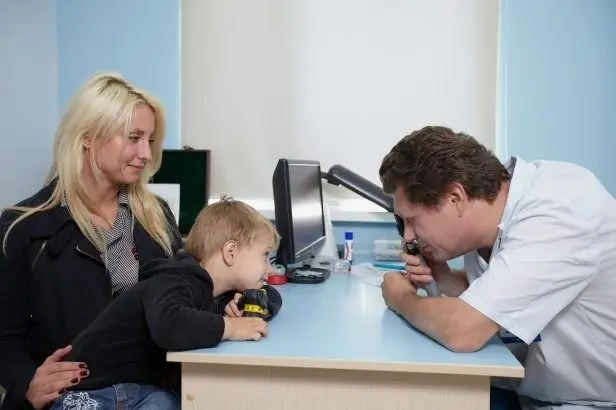- Author Horace Young [email protected].
- Public 2023-12-16 10:35.
- Last modified 2025-01-23 11:41.
Conjunctivitis is an inflammation of the lining of the eye that covers the lining of the eyelid. A variety of viruses (herpes, measles, SARS, influenza virus, etc.), bacteria (pneumococci, streptococci, staphylococci, etc.) can serve as the cause of the formation of this ailment. At the first symptoms of the appearance of pus in the eyes of a child, you should seek help from a doctor.

Types and differences of purulent eye diseases
As a rule, viral conjunctivitis often accompanies influenza, acute respiratory viral infections or acute respiratory infections. In a word, it arises as a consequence of any infectious disease. The source of this infection can be sinusitis, adenoiditis or tonsillitis. It should be noted that with bacterial conjunctivitis, discharge from the eyes is purulent, and with viral conjunctivitis, mucous membranes. The onset of conjunctivitis increases significantly if the child has measles.
The most contagious and common is adenoviral conjunctivitis. Initially, the child's body temperature rises, headaches appear and appetite decreases. After that, the temperature drops, and the general condition seems to be improving. Further, the body temperature rises again, and the eyes gradually turn red. The child may have a runny nose. Lymph nodes also swell over time. Adenoviral conjunctivitis is treated by instilling "Poludan", interferon, placing 0.25% florenal or tebrofen ointment behind the lower eyelid of the eye.
Staphylococcal or pneumococcal conjunctivitis is usually acute. First, the disease affects one, then the second eye. In this case, there is a strong redness of the eyes and strong purulent discharge.
Herpetic conjunctivitis is characterized by the appearance of characteristic vesicles around the eyes and on the edges of the eyelids. The child has photophobia and lacrimation. For treatment, experts recommend using the antiherpetic drug "Acyclovir".
Associated symptoms
In babies, the disease is not the same as in adults. Often, the child's appetite and sleep are disturbed. Sometimes he becomes very moody and refuses even his favorite dishes.
In the morning, the eyelids stick together, certain yellow crusts are formed. With conjunctivitis, the eyes fester, possibly the appearance of lacrimation and photophobia.
Please note: when the lower eyelid is pulled back, redness and swelling of the conjunctiva are visible.
If you find the slightest changes in your baby's eyes, you should immediately seek advice from an ophthalmologist. After all, the cause may be inflammation of the deeper membranes of the eye, an attack of glaucoma, or an eyelash that has got into the eye. Only a qualified specialist will be able to determine the true cause of the onset of the disease and prescribe the necessary treatment. Remember: you should not self-medicate, as this can only lead to a worsening of the situation.






